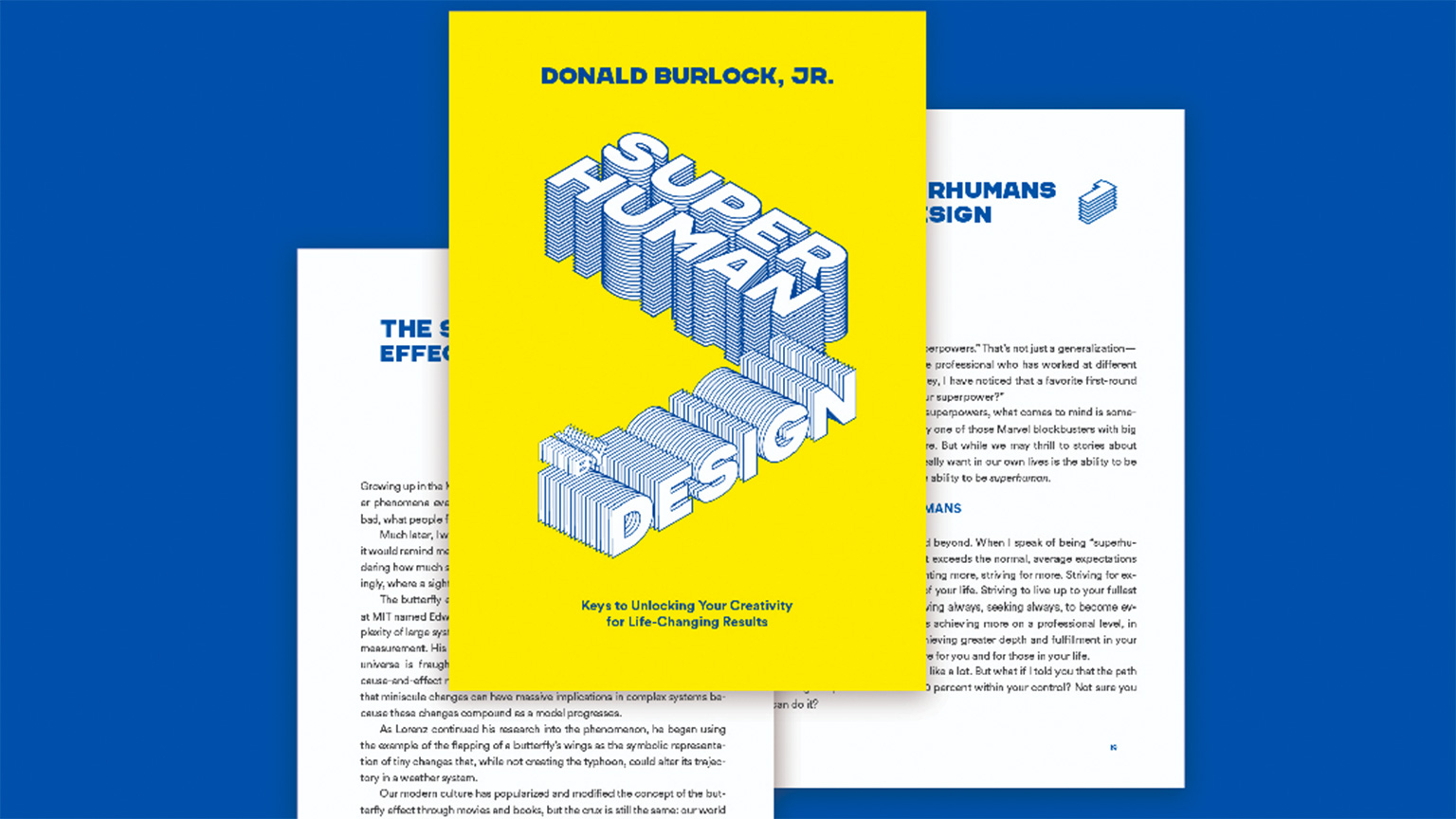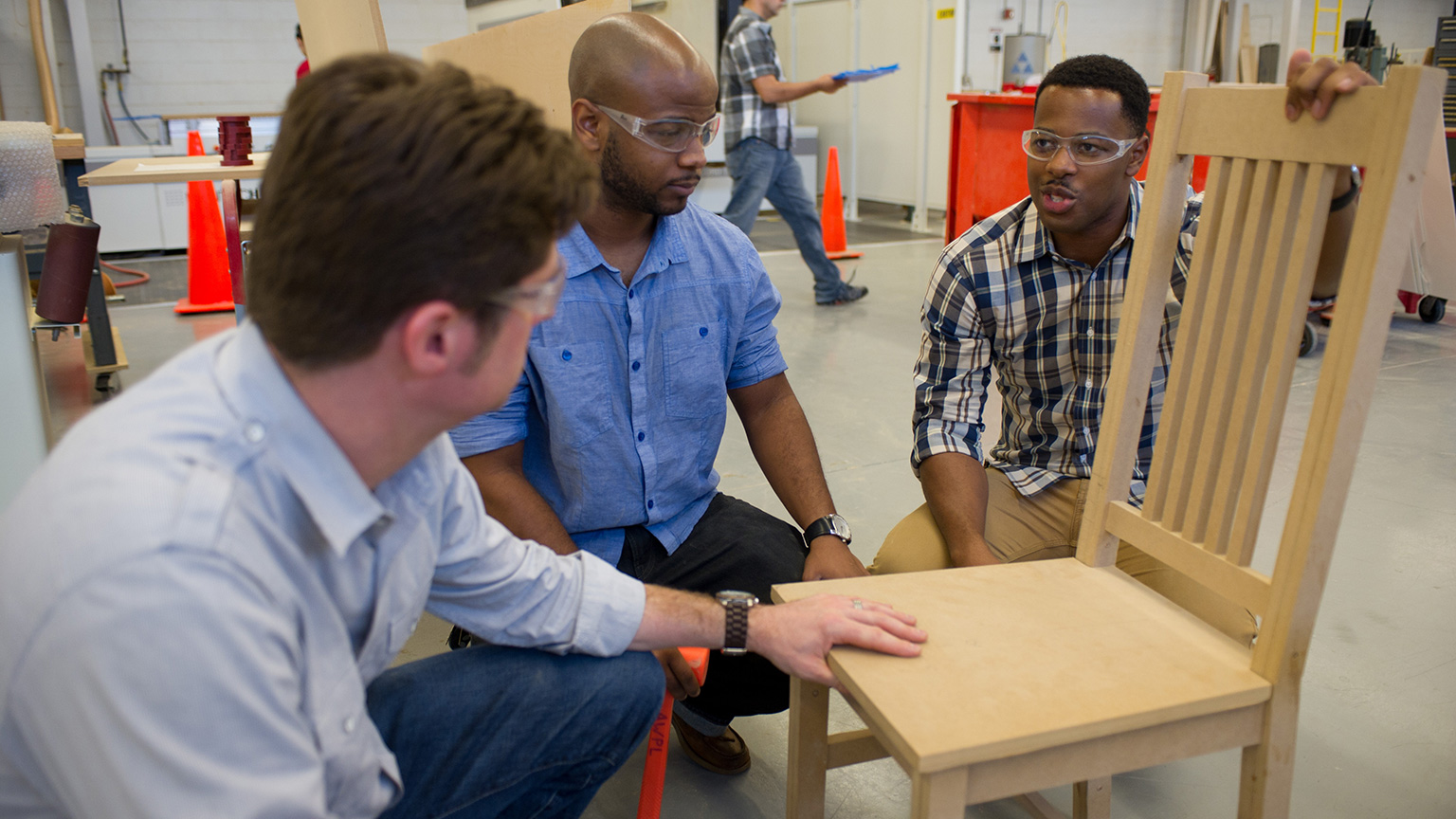
Donald Burlock, Ingenious Maker from Georgia Tech
Donald Burlock, Ingenious Maker from Georgia Tech
"I love the thought of getting through a really difficult program like industrial design at Georgia Tech," said Donald Burlock, Jr. (MID'12), "but what I love more is the humility that many of us grads have."
For more than ten years, Burlock worked in creative strategy and product design in Silicon Valley. He discovered that brands can build equity, authenticity, and relatability by having an informed and elegant design strategy. He also learned that industrial designers from Georgia Tech have standout abilities when it comes to empathy, dignity, and making.
"It's interesting how often in my career I've met other designers who go on and on about where they graduated from, and that's why they think they're right," Burlock said. "It's extremely difficult for them to act with humility while collaborating with other creatives."
"The people I graduated with love to solve problems for people. That’s what they love, and that’s a stark contrast from so many other designers."
Lessons Learned in Silicon Valley

Burlock cataloged several key tenets of successful design in his recent book Superhuman By Design. Among the most foundational for a successful designer, he said, are human-based values.
"More and more, designers have to have very present, very real conversations," he said. Successful design depends on understanding the values of the people you're designing for, and staying accountable to those values as a designer, he said.
"Sometimes that’s the impact of the technology, sometimes it’s about the human stuff — our differences, biases, historical context, or a more global discussion. And you can’t be afraid of that. If you have to push a topic about the environment you can’t be afraid of that. Or pushing for more ethical design, you can’t be afraid of that."
Burlock said one of the hardest lessons to learn as a designer in Silicon Valley was business acumen, but it's a lesson designers have a responsibility to understand.
"When I left Tech, I had a lot of great things. I had an entrepreneurial spirit, I had a collaborative mindset," he said. "When I got into industry and corporate design, I had to learn how businesses run."
"My whole thought process coming into it was, 'I just need to get everyone to be creative.' And that's partially true. But designers have to understand how the company they work for is running, and how to be in a room with colleagues who are not designers."
That's where having a maker's skillset as an industrial designer comes in handy, Burlock said.
"I think that's probably what landed me that first role. I had no fear of being in the shop. I had no fear of trying out new programs. I had a work ethic in terms of making." Whereas other designers he worked with would rely on design theory for their projects, "I would just go into the shop and come out with a prototype, and say to them, 'Guys, here's how we're going to communicate this to the rest of the team'," he said.
A Human-Centered Program Creates Human-Focused Designers

Burlock is an invited speaker for the School of Industrial Design's lecture series this semester. He will share lessons from his book with students in the School's programs, but he knows most of his stories will sound familiar to them.
"My classmates and I were focused on gathering as much qualitative input as we possibly could for our student projects," he said. "I think that was the backbone to all our making. You had to have rigorous research that involved people. You had to get out of your shell and understand who your audience was, who your user was."
"The kernel of how my book addresses a human-centered approach to creativity comes from going through a program that was very keen on understanding the values of the people you design for," he said. It also happens to be something of a personality trait for industrial design students at Georgia Tech, Burlock said. "It's like we love to solve really tough problems for people."
"I think about one of the people I graduated with who ended up building a career in furniture making for lots of businesses in Atlanta. His design has always been very community-centric, with big tables that have easy access, easy ingress and egress. It's amazing. Our class had a lot of people go to healthcare and design equipment for medical spaces. And people like me went to places like IDEO, to be a part of a consultancy that's human-centric and trying to solve all the world's problems."
Designers from Tech can do that because they learn to be ingenious, Burlock said. "Having creative designers surrounded by very technical, pragmatic fellow Tech students is the absolute game changer," he said.
"They end up able to design new technologies and products that humans can exist with. They keep humans in the picture. Sounds so obvious, right? But it's not. For instance, imagine five or 10 years from now, when we'll have even more personal robotics in our homes. The last thing you want is extremely brilliant, pragmatic individuals creating these little robots going all over your place. You want people who can make a robot a more human experience," he said.
"I believe that's our role," Burlock said, "to keep creativity at the epicenter of the work coming out of Georgia Tech. Ingenious creations come from the people who graduate from this program."